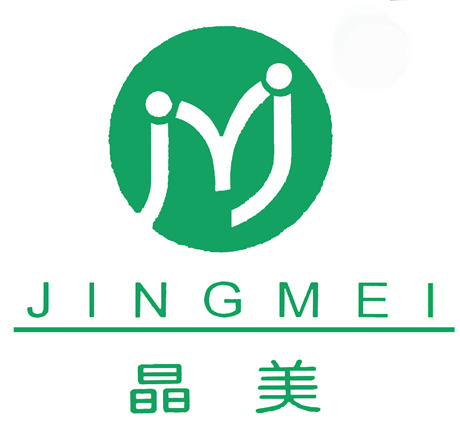NEWS
High Transparency Low-E Coated Glass: Revolutionizing Architectural Glass
Published:
2023-10-30 11:20
Author:
High transparency low-E coated glass is revolutionizing the architectural glass industry, offering a perfect blend of aesthetics, functionality, and energy efficiency. This advanced type of glass has gained popularity in the construction and decorative materials sector due to its exceptional properties and ability to enhance buildings' performance.
High transparency low-E coated glass refers to a type of glass that is coated with a low emissivity (low-E) coating, which allows it to reflect and absorb heat while maintaining high levels of transparency. This coating is typically made of multiple layers of metallic oxides, applied through a vacuum deposition process, creating a thin and transparent film on the glass surface.
One of the primary benefits of high transparency low-E coated glass is its ability to control the transfer of heat and light. It effectively reduces the amount of heat that passes through the glass while allowing natural light to enter, resulting in improved energy efficiency. This feature helps regulate the temperature within buildings, reducing the need for excessive air conditioning or heating, and ultimately reducing energy consumption and costs.
Additionally, high transparency low-E coated glass offers excellent insulation properties, making it ideal for use in regions with extreme weather conditions. It helps keep buildings warm during winter by preventing heat from escaping and keeps them cool during summer by minimizing heat gain from outside.
Architects and designers appreciate the versatility of high transparency low-E coated glass, which can be used for various applications. It can be incorporated into windows, doors, skylights, and curtain walls, enhancing the overall aesthetics of a building while providing energy-saving benefits. Its transparent nature allows for unobstructed views, creating a sense of openness and connection with the surrounding environment.
Furthermore, high transparency low-E coated glass contributes to the sustainability goals of the construction industry. By reducing energy consumption and reliance on artificial lighting and heating, it helps lower greenhouse gas emissions and promotes a greener environment. Its long-lasting durability also minimizes the need for frequent replacements, reducing waste generation.
As the demand for energy-efficient and environmentally friendly buildings continues to rise, high transparency low-E coated glass is expected to play a crucial role in shaping the future of architecture. Its ability to balance aesthetics, functionality, and sustainability makes it a desirable choice for both residential and commercial projects.
In conclusion, high transparency low-E coated glass is transforming the architectural glass industry by offering enhanced energy efficiency, insulation, and aesthetic appeal. Its applications are widespread, and its benefits make it a preferred choice for architects, designers, and building owners. Embracing this innovative glass technology not only enhances the visual appeal of structures but also contributes to a more sustainable future.
High transparency low-E coated glass refers to a type of glass that is coated with a low emissivity (low-E) coating, which allows it to reflect and absorb heat while maintaining high levels of transparency. This coating is typically made of multiple layers of metallic oxides, applied through a vacuum deposition process, creating a thin and transparent film on the glass surface.
One of the primary benefits of high transparency low-E coated glass is its ability to control the transfer of heat and light. It effectively reduces the amount of heat that passes through the glass while allowing natural light to enter, resulting in improved energy efficiency. This feature helps regulate the temperature within buildings, reducing the need for excessive air conditioning or heating, and ultimately reducing energy consumption and costs.
Additionally, high transparency low-E coated glass offers excellent insulation properties, making it ideal for use in regions with extreme weather conditions. It helps keep buildings warm during winter by preventing heat from escaping and keeps them cool during summer by minimizing heat gain from outside.
Architects and designers appreciate the versatility of high transparency low-E coated glass, which can be used for various applications. It can be incorporated into windows, doors, skylights, and curtain walls, enhancing the overall aesthetics of a building while providing energy-saving benefits. Its transparent nature allows for unobstructed views, creating a sense of openness and connection with the surrounding environment.
Furthermore, high transparency low-E coated glass contributes to the sustainability goals of the construction industry. By reducing energy consumption and reliance on artificial lighting and heating, it helps lower greenhouse gas emissions and promotes a greener environment. Its long-lasting durability also minimizes the need for frequent replacements, reducing waste generation.
As the demand for energy-efficient and environmentally friendly buildings continues to rise, high transparency low-E coated glass is expected to play a crucial role in shaping the future of architecture. Its ability to balance aesthetics, functionality, and sustainability makes it a desirable choice for both residential and commercial projects.
In conclusion, high transparency low-E coated glass is transforming the architectural glass industry by offering enhanced energy efficiency, insulation, and aesthetic appeal. Its applications are widespread, and its benefits make it a preferred choice for architects, designers, and building owners. Embracing this innovative glass technology not only enhances the visual appeal of structures but also contributes to a more sustainable future.
Keywords:
high transparency type low-e coated glass
Related News














